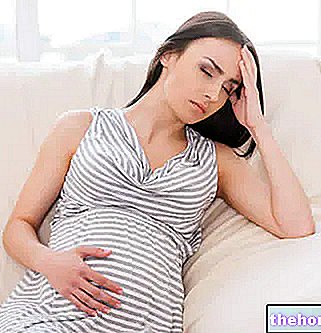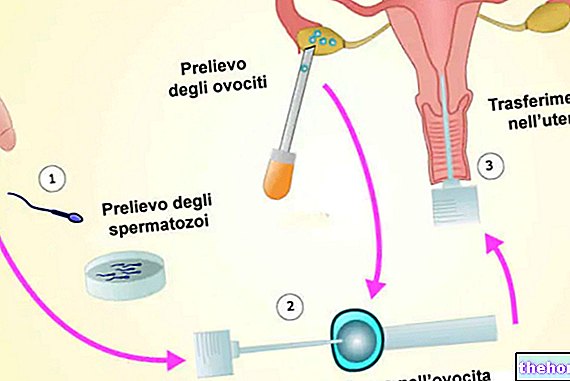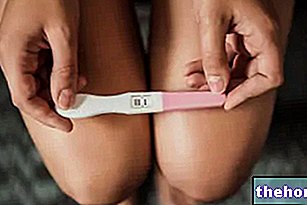The combined test combines the "ultrasound examination of nuchal translucency with a" maternal blood test.

The answer of the combined test is therefore a number that expresses a probability. If the number is between 1/1 and 1/350 the probability that the child is affected by Trisomy 21 is considered high. Although the last extreme (one probability out of 350) shows a risk that is all in all contained, it is still considered worthy of further investigation. Therefore, beware of unnecessary alarmism; unjustified anxiety is not a good companion for pregnancy.
A high probability result does not mean that the child has trisomy 21 or malformations. To confirm or exclude the suspicion that it is, it is necessary to undergo an invasive examination (amniocentesis or CVS), which in most cases shows a fetus absolutely free of chromosomal diseases.
When the risk index is less than 1: 350 (eg 1: 500) the probability is considered low; unfortunately, however, the presence of trisomy 21 or other fetal malformations cannot be completely excluded. , are not highlighted by the examination. The combined test, in fact, is statistically able to identify nine cases of trisomy 21 out of 10, while the tenth escapes the diagnosis. This means that in the latter case - although the fetus is actually affected by Dowm's syndrome - the combined test does not consider it as such.
Combined test: when and how to do it
The combined test is performed in the 1st trimester of pregnancy (11th - 13th week of gestation) and as mentioned is based on the use of a combined technique: on the one hand the measurement of nuchal translucency and on the other the dosage of two biochemical markers. in the bloodstream; these markers are called respectively free-beta hCG (free fraction of the β subunit of chorionic gonadotropin) e PAPP-A (plasma protein A associated with pregnancy).
The greater the thickness of the nuchal translucency, the greater the risk of Down Syndrome or other chromosomal disorders such as Trisomy 18.
In cases of trisomy 21 (another name for Down syndrome), during the first trimester the serum concentration of the β-hCG fraction is higher than in pregnancy with a euploid fetus (not affected by Down syndrome), while PAPP-A is below the norm. Therefore, the more PAPP-A decreases and the more free-beta hCG increases, the higher becomes the risk of the aforementioned chromosomal diseases.
BOTH TESTS DO NOT INVOLVE ANY RISK TO THE HEALTH OF THE MOTHER OR THE FETUS.
Based on the test values, the statistical risk is calculated by software that also take into account other factors, such as subjective variability for gestational age, maternal age, body weight, smoking habit, tendency to threaten abortion and previous children with chromosomal abnormalities. Women with an increased risk (> 1: 350) are then referred free of charge to an invasive prenatal diagnosis, for the control of the fetal karyotype (CVS or amniocentesis). Unfortunately, both procedures carry a very small but still present risk of miscarriage (0.5-1%), which is why they are generally preceded by a screening test.
To carry out the combined test it is sufficient to perform a simple maternal blood sample, before which fasting is not necessary. Ultrasound measurement of nuchal translucency can be performed transabdominally or transvaginally; in the latter case, the examination provides a better resolution of the image and a more correct scan; however, it can also cause some discomfort to the pregnant woman.

The age factor
1) The risk of having a child with a "chromosomal abnormality increases with" advancing maternal age, becoming consistent after 35 years of age.
2) The only way to exclude with certainty a chromosomal abnormality is to undergo invasive tests, such as CVS or amniocentesis, which carry a risk of abortion equal to about 1%.
On the basis of these considerations, at first the analysis of the fetal karyotype was proposed to all women over the age of 35. In reality, from the statistical data, it emerged that about 70% of fetuses affected by Down was born from "younger" women, therefore considered to be at low risk. How to explain this phenomenon? Simply with the fact that young women conceive much more than those over the age of 35; in fact, especially in those days, few it was the women who decided to have a child beyond this age (today, the percentages are changing due to the changes in the socio-economic fabric).
In essence, therefore, children with Down syndrome are more often born to relatively young mothers, because they conceive more than women who get older, who give birth to higher percentages of children with Down syndrome only in relative terms.
Based on these further considerations, an attempt was made to undertake non-invasive tests to identify high-risk pregnancies in young women. The non-invasiveness of these tests was essential, since - also considering the high costs of the investigation - it was unthinkable to subject all pregnant women to amniocentesis or CVS; rather, these tests had to be reserved for pregnancies with high enough risk to justify the danger of loss. fetal and the important cost for the national health system So, how to quantify this risk? The answer is contained in the current screening tests - such as combined test, tri-test or quad test - to which ALL the obstetric population is subjected; thanks to this filter it is possible to skim pregnant "at risk", therefore deserving of an in-depth study with invasive diagnosis (amniocentesis and CVS).
Who is the combined test suitable for?
To all pregnant women under the age of 35 who wish to assess the risk of the fetus suffering from Down syndrome (trisomy 21) early, and then decide whether to undergo more invasive tests such as amniocentesis or chorionic villus sampling.
To pregnant women over the age of 35 who wish to assess the risk more precisely, to decide whether or not to undergo invasive prenatal diagnostic methods. In general, however, women over the age of 35 undergo amniocentesis or chorionic villus sampling directly, bypassing screening tests such as the combined test.




























